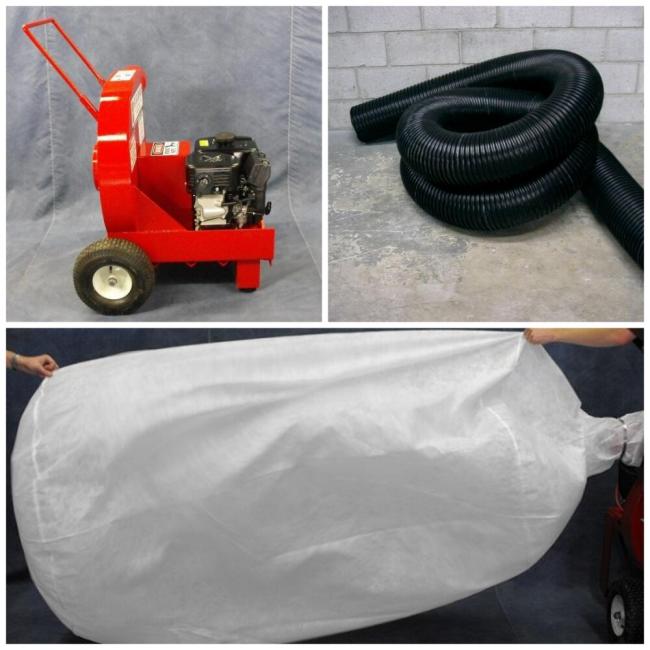Using Insulation Removal Vacuums: How To Protect Against Dust & Debris

When cleaning a dusty old attic of old insulation, the biggest challenge might seem like it is getting all the debris out of the corners, but it is something else. It is protecting yourself against the very same dust. Capable of causing irritation at its mildest and respiratory issues at its worst, insulation dust needs to be dealt with promptly.
So while you are busy preparing your insulation removal vacuum for peak season, pay extra attention to how you intend to keep yourself and your crew safe on the job. Using a high-power, high-capacity vacuum is only part of the equation. The other part involves proper handling of the equipment, donning safety gear, and effective dust containment.
In this blog, we will discuss how insulation workers can effectively manage onsite dust and keep their crew safe.
Why Using An Impactful Insulation Removal Vacuum Impacts Dust Exposure?
With an advanced insulation removal vacuum powering your efforts, spotless results are inevitable. But bear in mind, these vacuums function by moving high-volume air to pull insulation efficiently – even from the corners.
This airflow, though very effective, can stir up fine fibers from materials such as cellulose, fiberglass or mineral wool, thus increasing your chances of severe exposure. If you do not take proper precautions, you and your crew could suffer from irritated skin, eyes, and lungs. That is why safety truly is top priority on any jobsite that requires working with insulation.
Personal Protective Equipment To Use With An Insulation Removal Vacuum
Even if the machine you use offers unparalleled suction action and cleaning efficiency, you still cannot escape insulation dust exposure. To safeguard against these airborne particles, contractors should:
- Wear respirators rated suitable for fine dust exposure, such as N95 masks or higher
- Put on safety goggles or face shields when extracting insulation
- Wear long-sleeved clothing along with gloves
- Don disposable suits or protective coveralls
By keeping yourself as covered as possible without compromising breathability, you can minimize insulation exposure and instances of irritation.
How To Bag & Contain Insulation Dust Effectively?
To prevent exposure to anyone present onsite (your crew and your clients included), you must resort to proper bagging techniques. Insulation removal vacuum bags keep all of the debris contained once it exits the machine. However, to ensure it remains inside the bag, you must:
- Make sure the bags are securely attached to the discharge point of the vacuum
- Promptly replace vacuum bags before they get too full
- Once removed, seal the bags carefully to prevent recontamination
Using insulation removal vacuum bags is the most effective way to contain debris at the source. It is also instrumental in keeping your worksite clean.
Hose & Jobsite Management
While using the right vacuum and compatible collection bags works, preventing dust leaks should also be on your agenda. With the proper hose set-up, you can maintain both suction power and prevent the escape of debris into the surrounding air. Best practices to follow include:
- Providing adequate support to long hoses to keep kinks and sagging at bay
- Avoiding sharp bends in the hose to prevent damage and a reduction in airflow
- Using temporary barriers to ensure dust does not find a way to enter nearby areas
Effective hose management, along with the use of PPE, can virtually eliminate excessive exposure to harmful insulation dust.
Conclusion
If you manage to follow each of the practices we have listed above, you and your crew can entirely escape the hazards of insulation dust exposure. Of course, that involves the use of the right insulation removal vacuum, compatible accessories, and PPE.
If you are looking for the first two, we can help you. Heat Seal Equipment Ltd. is a leading supplier of insulation removal equipment and add-ons in Ajax, Ontario. Contact us to get tools that minimize the mess and protect your workers on-site.
FAQs
How often should insulation removal vacuum bags and hoses be inspected?
We recommend inspecting both of them before each job. Check hoses for cracks, and closely observe bags for tears. Dust exposure can only be prevented if both are fit for use.
Can multiple contractors use a single high-capacity insulation removal vacuum onsite?
Yes, as long as the manufacturer explicitly mentions that the vacuum is suitable for such use in the instruction manual. Also, each operator must follow hose handling and bag management guidelines while wearing proper PPE.
Can insulation vacuums be used to remove wet insulation?
We do not recommend it. Most machines are meant to be used on dry insulation only. Using them on wet insulation can cause safety hazards and damage the equipment.





